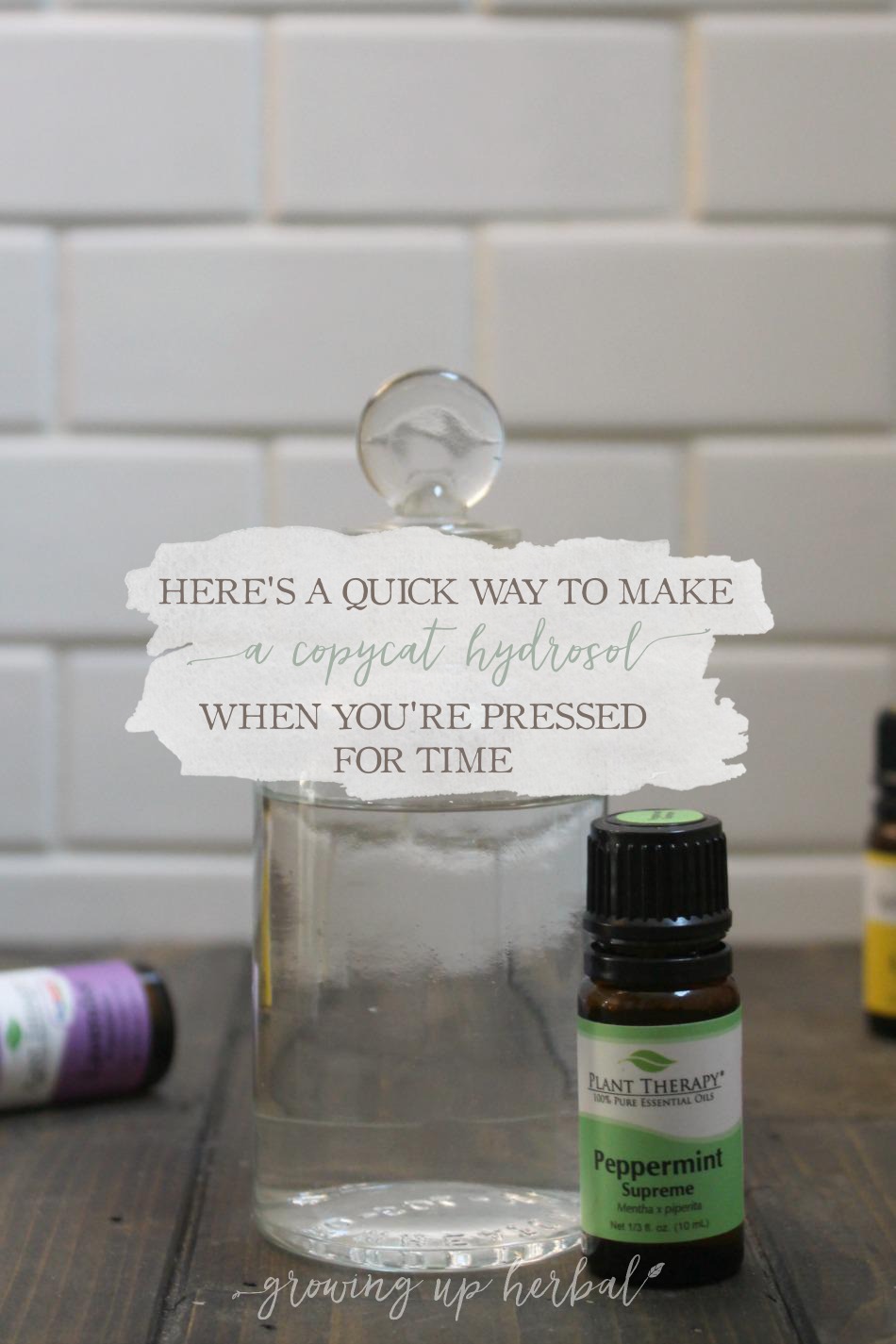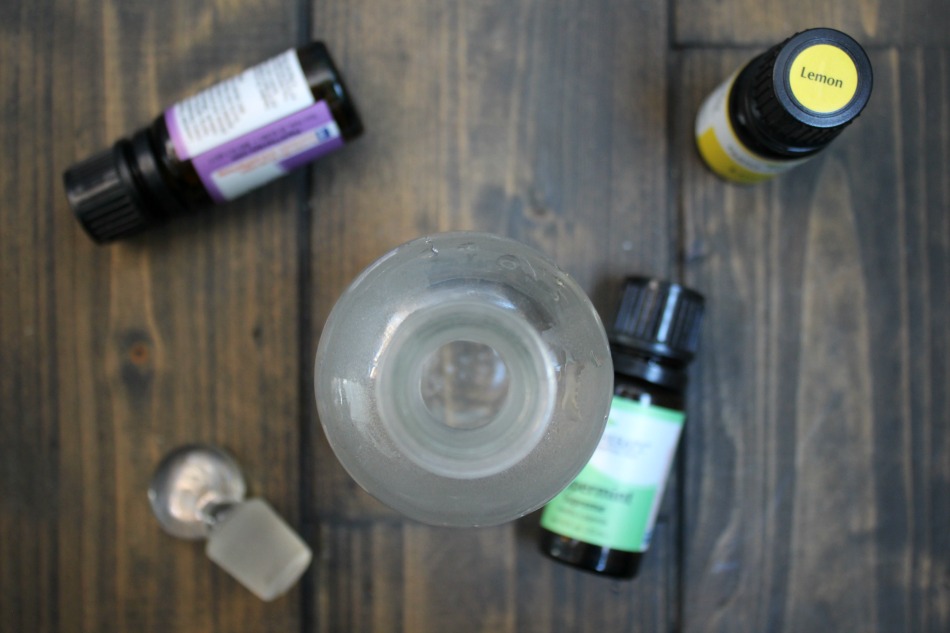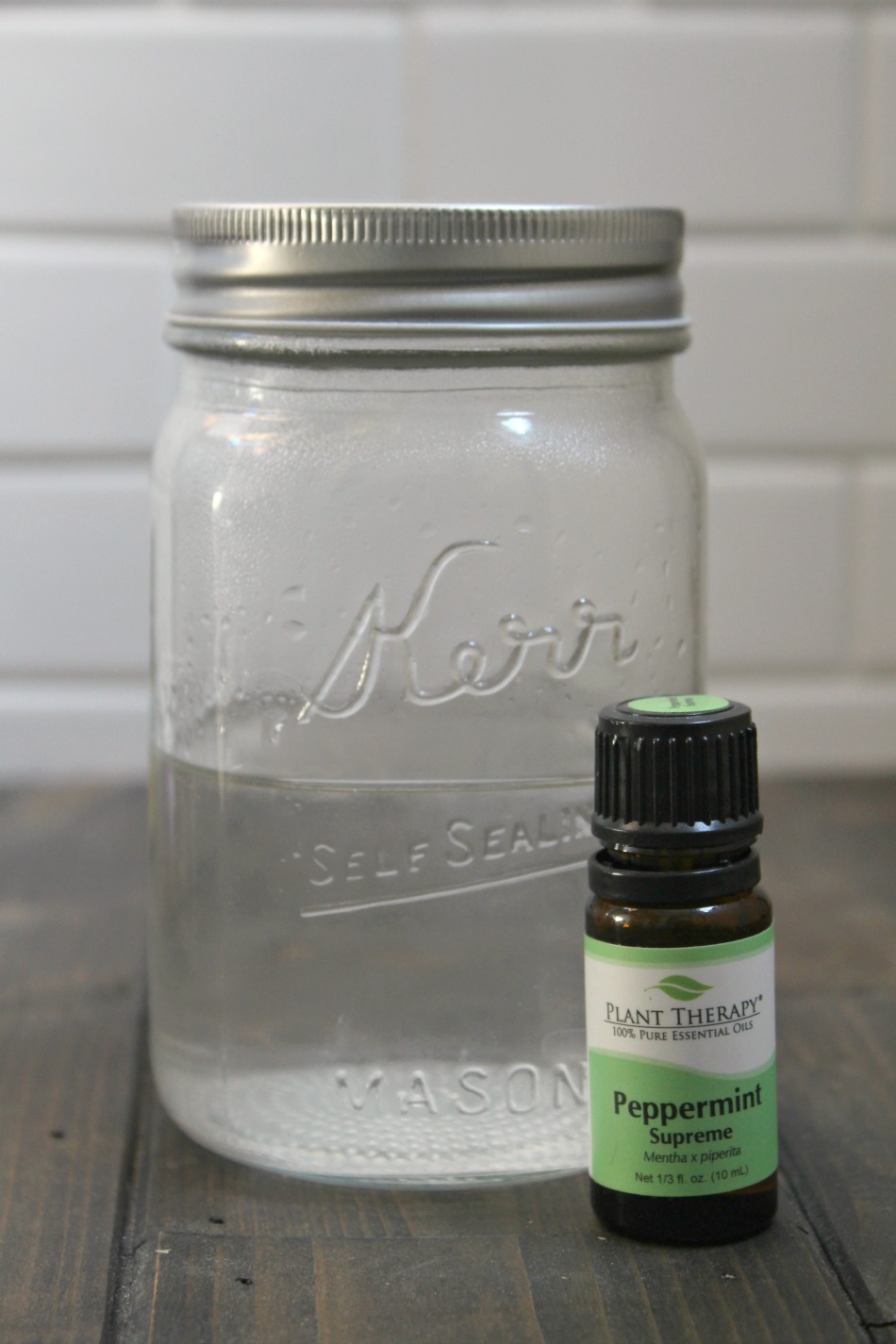
It never fails… you’re pressed for time, and you don’t have what you need on hand. So what do you do? Do you run off to the store and buy it? Do you purchase it online along with expensive express shipping? Or, do you make it yourself at home using a quick-fix method? Well, I suppose that depends on what you need, but if you ever find yourself in a pinch for an herbal hydrosol then don’t worry because today, I’m going to show you a quick way to make a copycat hydrosol even if you’re pressed for time!
If you haven’t already noticed, I’m a big fan of these hydrosols. So much so that I want to stock my fridge with them, use them for every little thing, and tell you all about them so you can benefit from them too.
Seeing how hydrosols (or hydrolats, if we’re being technical) aren’t super popular these days, you may have no idea what I’m talking about so let me quickly bring you up to speed. You won’t want to miss out on knowing about and using these natural gems!
A Brief Introduction To Hydrosols
Hydrosols are water solutions made by distilling plant material. These solutions contain many of the water soluble properties of the plant, and can be used safely for all ages (with a few exceptions for pregnant women or those with certain health conditions).
There are many practical ways to use hydrosols, and they can be used externally on the skin or taken internally if needed (Harris, 2015). You can purchase them from various suppliers or you can make your own.
Now, if the idea of hydrosols excites you like it does me, great! However, there may come a time when you find yourself needing a hydrosol… like right now, but you either don’t have one on hand or you don’t have the herb to make it.
That’s why I’m going to show you a quick way to make a hydrosol by making a copycat version that works very similarly called an “essential oil water.”
The Copycat Hydrosol
copycat [kop-ee-kat]:
noun – a person or thing that copies, imitates, mimics, or follows the lead of another.
Notice that a copycat imitates or copies something else… it isn’t the actual, authentic version of the thing. It is only a copy. This is what essential waters are to hydrosols. They are copycat versions.
I explained the difference in hydrosols, floral waters, and essential oil waters in this post, but basically, they’re all the same thing, only with slight variations.
A hydrosol is the result of distilling plant material. A floral water is also a hydrosol, but it tends to be used for hydrosols made from the floral parts of a plant only. Essential oil waters, however, are a bit different from hydrosols and floral waters because they are made with essential oils instead of plant mater.
Essential oil waters do not contain all of the properties that a hydrosol does (seeing how plant matter is not part of their production), but like a hydrosol, they do contain the volatile oils of the plant which means they can be used in place of a hydrosol when you are in a pinch for one.
How To Make An Essential Oil Water (AKA… A Copycat Hydrosol)
Ingredients:
- 1 cup boiled water
- heat-proof bowl
- 6-10 drops of an essential oil
Directions:
- Pour 1 cup (8-ounces) of boiled water into a heatproof bowl.
- Add 6-10 drops of an essential oil into your water, and cover your bowl completely so the water will cool and condense and fall back into the bowl. Let this sit 20-30 minutes.
- Pour the mixture through an unbleached, paper coffee filter to take out the globules of essential oil.
- Let the mixture to cool, then bottle and label.
(Worwood, 2000)
Safety Matters To Consider
I do have one caution when it comes to using an essential oil water in place of a hydrosol. Perhaps this isn’t a caution if you’re a certified aromatherapist with a lot of experience in this area, but for someone like me (having some essential oil training under my belt, but not enough to be “certified”), it’s something to be aware of.
Age-appropriate hydrosols can be used safely on children because they contain a low concentration of essential oils, and hydrosols can also be taken internally. And while the same is true for using age-appropriate essential oil waters on children, I would be very cautious when using essential oil waters internally. Perhaps it’s totally fine, and not a big deal. But, I don’t have enough training or experience in this area, therefore, I choose not to use essential oil waters internally just to play it safe. If you have questions about this, get it touch with a clinical aromatherapist. I’m sure they’d be more than happy to work with you!
Thanks again for sticking with me through this post and all my recent hydrosol content. I hope you’re enjoying learning about hydrosols as much as I am, and I hope you already have a bunch of ideas on how you can incorporate these preparations into your life.
Help a gal out, and repin this post on your essential oil and natural remedy Pinterest boards! I’ll name my next kid after you! (Just joking…)
[yumprint-recipe id=’22’]REFERENCES:- Harris, L. (2015, April 30). Retrieved February 03, 2017, from http://www.usingeossafely.com/hydrosols-hydrolats-aromatic-waters-oh-my-everything-you-wanted-to-know-about-hydrosols/
- Worwood, V. A. (2000). Aromatherapy for the healthy child: more than 300 natural, non-toxic, and fragrant essential oil blends. Novato, CA: New World Library.




This is brilliant! I don’t know how many recipes I have had to put aside because I haven’t had a hydrosol but you have solved that problem. I have just found your site and I am thrilled to be here. Thank you so much for generously sharing your knowledge and enthusiasm – you are a gem!
You’re welcome, Denise, and I hope this helps making DIY products and remedies much easier on you!
5
Hi Meagan,
Do you add a preservative to your hydrosols? If so, how much and what kind. Do you stir them in the refrigerator? Do you have an idea as to shelf life?
Thank you so much!
I don’t use preservatives in my hydrosols. From what I’ve researched, true hydrosols don’t need preservatives, and they tend to have a shelf-life of around 6 months refrigerated. However, copycat hydrosols are mostly water so I keep them refrigerated and use them within a week. Hope that answers your questions.
4
Thanks for the rundown on “hydrosols”!!
You’re very welcome, Lauren!